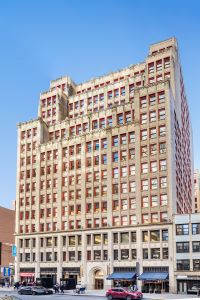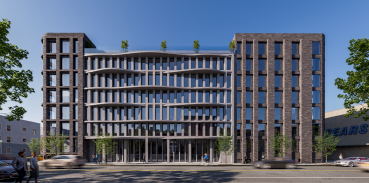Atlantic Yards and the Great Recession Groundbreaking
By Eliot Brown March 12, 2010 12:46 am
reprintsThe M.T.A. agreement was a prime example: Initially Forest City was to pay $100 million for the entire three-block rail yard and make a new modern rail yard for the LIRR. After the economy turned, it renegotiated: Forest City will now pay $20 million for what is by far the most valuable parcel—about one-third of the property—and have an $80 million option on the rest some years down the line. The size of the new rail yard was reduced; the renegotiation, done last summer, was not the agency’s finest hour.
BEYOND INTERACTIONS WITH government, a national theme underlays all of this: America’s addiction to subsidizing professional sports facilities.
Mr. Markowitz put it best at the Thursday event: “Every city in America competes for a national sports team,” he declared, clearly pleased that Brooklyn had won its own.
Which is the problem: Cities are always starving to attract new sports teams and even more desperate to prevent existing ones from leaving. Given that the bar has been raised so high with the high quality of these facilities—and their suburban home-sized HD Jumbotrons—they can never be profitable on their own, and have come to depend on giant infusions of subsidies from often-willing governments. This was always the shining allure of the project, evoking nostalgia for the era when Brooklyn had its own professional sports team in the Dodgers.
And, like with other arenas around the country, the Nets received their subsidies. The Nets, for instance, will pay no property tax on their arena. There is about $200 million from the city in direct subsidy, and another $100 million from the state. More than $500 million in bonds for the arena are tax-exempt, a subsidy mostly falling on the federal level. The revised M.T.A. deal surely must be considered a subsidy.
To have this deal collapse on any of those politicians in office would have been more then the standard blow of a typical real estate deal’s collapse: the electeds would have suffered the humiliation losing the chance for a Brooklyn team.
All the focus on the public sector is not to take anything away from Mr. Ratner and his Forest City. The company clearly poured hundreds of millions of dollars into this thing before it ever started construction. Costs have soared, values have fallen, and financing is in short supply. That Mr. Ratner did not just write the project off must have been painful financially, as the sunk costs kept piling up (it didn’t help that the Nets continually had more than $70 million a year in pre-tax losses, and their performance on the court grew worse over time).
NOW, THE SEVEN-YEAR chapter of planning and fighting is over.
For Mr. Ratner, this must come with tremendous relief. His company has become consumed by the project in recent years. Normally a top contender in anything big and administered by the public sector, it pulled out of bidding on the Willets Point development this year, and failed to bid on the West Side rail yards.
Forest City now has control of the site in the heart of what will presumably some day emerge as a new, high-density strip in Brooklyn. Housing will likely pop up over time—Forest City is required to build some of the initially pledged promised 6,400 units—and the company is now saying the construction on the residential component will start next year.
“Onward and upward to the next chapter,” Mr. Ratner said to the crowd at the groundbreaking. “Thank you all.”
ebrown@observer.com


